Landing in Accra feels like stepping into a vibrant tapestry of sounds, colors, and most importantly, incredible aromas wafting from every corner. The capital city of Ghana doesn’t just greet visitors with friendly faces and bustling markets—it welcomes them with a culinary adventure that tells the story of West African tradition through every bite. From street-side vendors serving up quick bites to family-run restaurants preserving age-old recipes, Accra’s food scene offers an authentic taste of Ghanaian culture that goes far beyond just feeding hunger.
The city’s dining landscape reflects centuries of trade, migration, and cultural exchange, creating dishes that are both deeply rooted in tradition and surprisingly diverse. Here is a list of 15 Ghanaian plates that will make you feel right at home in this dynamic city.
Jollof Rice
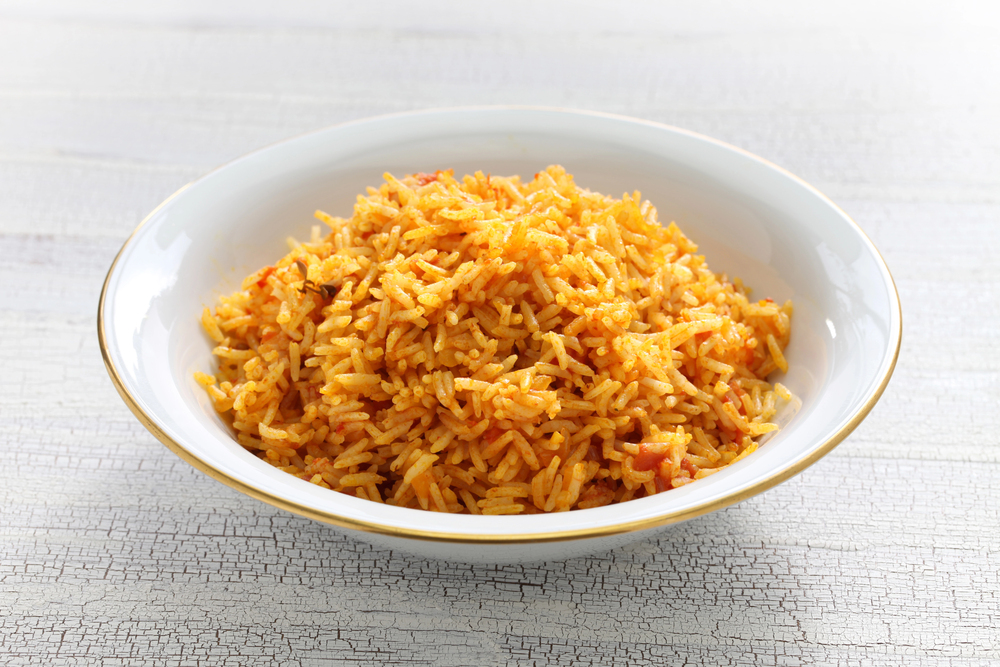
No conversation about Ghanaian cuisine can begin without mentioning jollof rice, the dish that sparks friendly debates across West Africa. This one-pot wonder combines long-grain rice with tomatoes, onions, and a blend of spices that creates a rich, orange-hued masterpiece. The Ghanaian version tends to be a bit drier than its Nigerian counterpart, with each grain perfectly seasoned and distinct. Street vendors and high-end restaurants alike serve their own interpretations, often accompanied by fried plantains, grilled chicken, or beef.
Banku and Tilapia
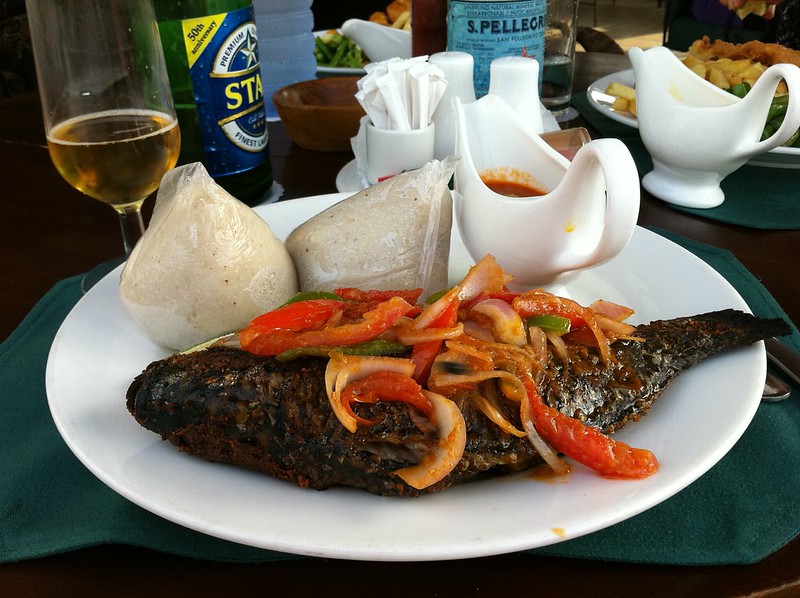
Think of banku as Ghana’s answer to comfort food—a fermented corn and cassava dough that’s cooked until it reaches the perfect chewy consistency. This staple pairs beautifully with grilled tilapia, creating a combination that locals consider essential eating. The fish is typically seasoned with ginger, garlic, and local spices before being grilled over charcoal, giving it a smoky flavor that complements the slightly tangy banku. Many visitors find themselves ordering this dish repeatedly throughout their stay.
Fufu and Light Soup
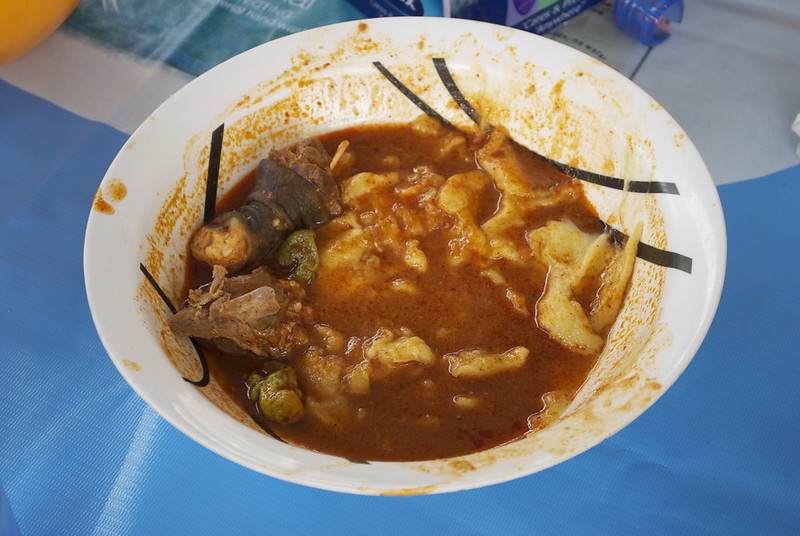
Fufu represents one of Ghana’s most traditional preparations, created by pounding cassava and plantain (or yam) until it becomes a smooth, stretchy dough. The real magic happens when it’s paired with light soup—a clear, aromatic broth loaded with meat, fish, and vegetables. Eating fufu requires a specific technique: you pinch off a small portion, dip it in the soup, and swallow without chewing. This communal dish brings families together and offers visitors an authentic cultural experience that goes beyond mere dining.
Kelewele
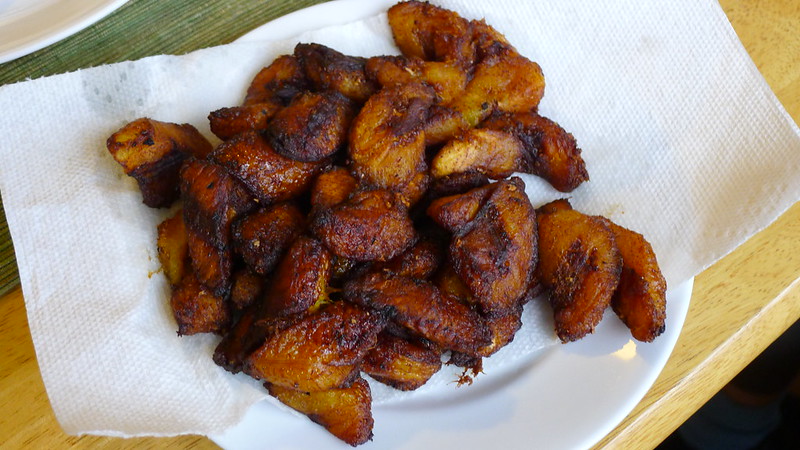
Street food doesn’t get much better than kelewele, Ghana’s beloved spiced plantain cubes that turn ordinary fruit into something extraordinary. Vendors slice ripe plantains and toss them with a mixture of ginger, garlic, pepper, and other spices before deep-frying them to golden perfection. The result is a snack that’s simultaneously sweet, spicy, and incredibly satisfying. You’ll find kelewele vendors throughout Accra, especially in busy markets and along popular streets during evening hours.
Waakye
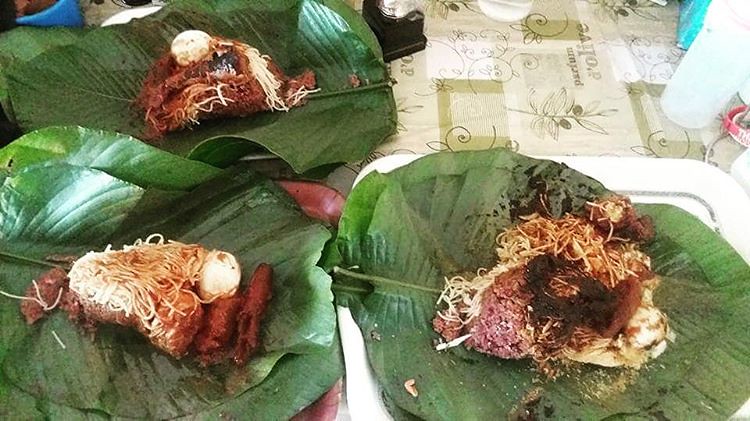
This rice and beans dish might sound simple, but waakye (pronounced ‘wah-chay’) is anything but ordinary. The magic lies in the dried millet leaves that give the dish its distinctive reddish-brown color and subtle earthy flavor. Served with a variety of accompaniments like boiled eggs, fried fish, plantains, and spicy pepper sauce, waakye becomes a complete meal that satisfies both hunger and taste buds. Many locals consider it the perfect breakfast, though it’s enjoyed throughout the day.
Red Red
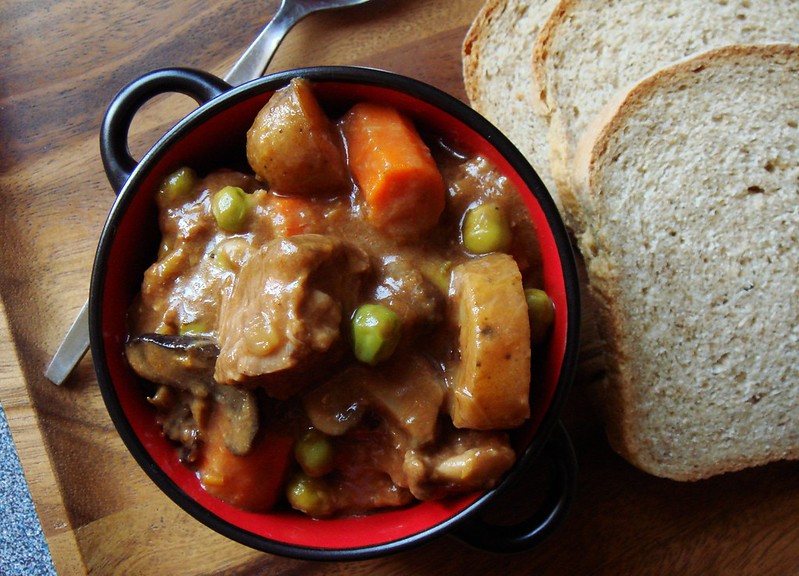
Don’t let the name fool you—red red is a hearty stew that combines black-eyed peas with palm oil, creating a rich, flavorful dish that’s both nutritious and delicious. The deep red color comes from the palm oil and tomatoes, while onions, ginger, and spices add complexity to every spoonful. Traditionally served with fried plantains and rice, red red offers a perfect example of how Ghanaian cooks transform simple ingredients into something memorable. The combination of textures and flavors makes it a favorite among both locals and visitors.
Tuo Zaafi
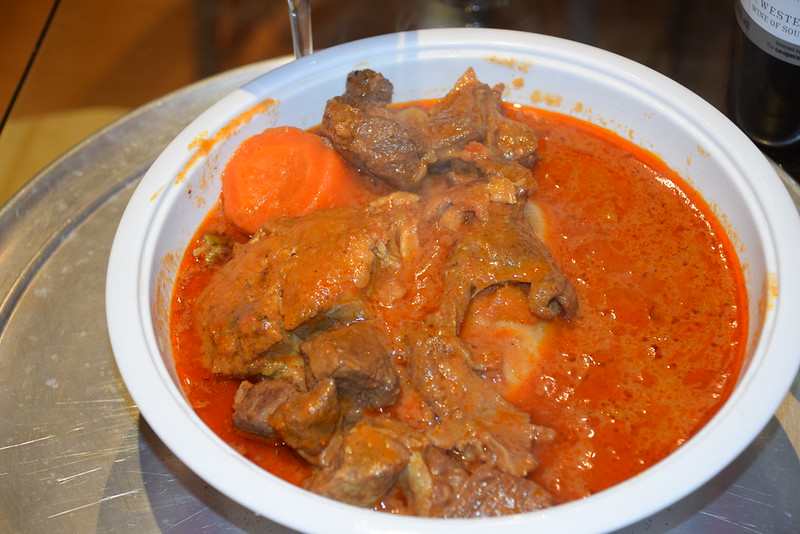
Northern Ghana’s contribution to the national cuisine, tuo zaafi is a corn flour dumpling that’s similar to fufu but with its own distinct character. The dumplings are typically white and have a slightly different texture than their southern counterparts. They’re usually served with a variety of soups, including groundnut soup or green vegetable soup packed with leafy greens and meat. This dish represents the diversity within Ghanaian cuisine, showing how different regions have developed their own specialties while maintaining the country’s overall culinary identity.
Groundnut Soup
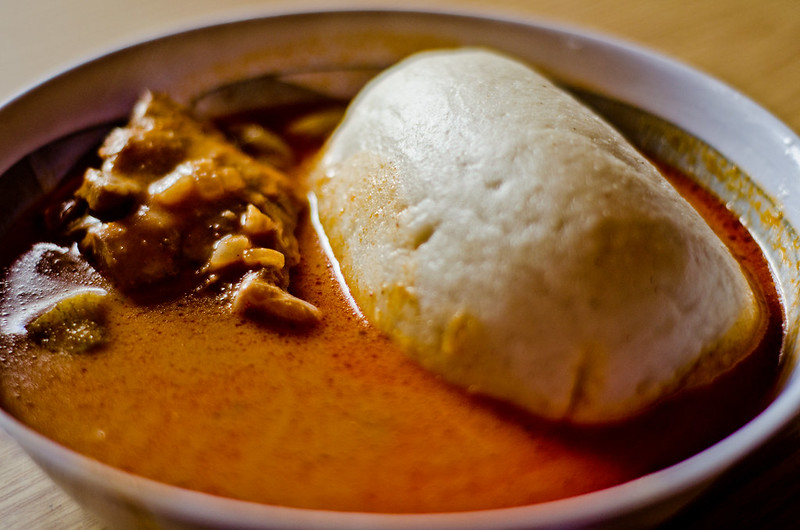
Peanuts take center stage in this creamy, protein-rich soup that’s beloved throughout Ghana. Made from ground peanuts (groundnuts), tomatoes, and various spices, this soup has a rich, nutty flavor that pairs perfectly with rice, fufu, or banku. The preparation involves slowly cooking the ground peanuts with vegetables and meat or fish until everything melds together into a satisfying, warming meal. Many families have their own special recipes, passed down through generations and closely guarded as family secrets.
Konkonte
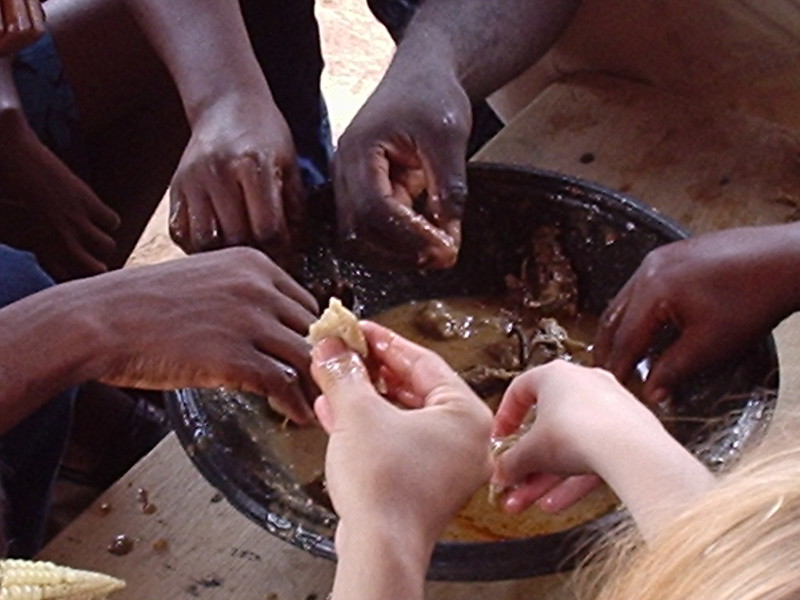
Sometimes called ‘face the wall’ because of its humble appearance, konkonte is a dish made from dried and ground cassava that’s mixed with hot water to create a smooth, moldable consistency. Despite its simple ingredients, konkonte has sustained generations of Ghanaians and represents the resourcefulness of the country’s cuisine. It’s typically served with palm nut soup or light soup, and while it might not win any beauty contests, the taste and nutritional value make it a respected part of the culinary landscape.
Ampesi
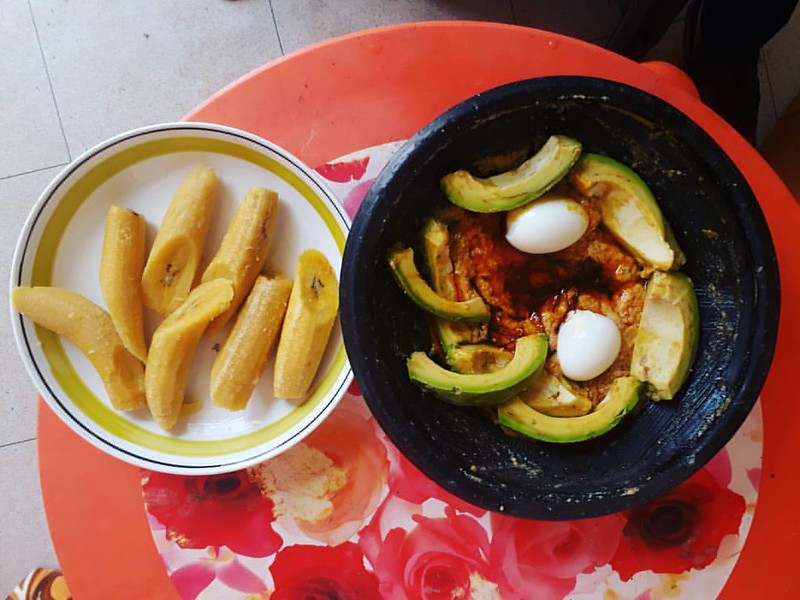
This boiled food platter showcases the natural flavors of fresh ingredients without heavy seasonings or complex preparations. Ampesi typically includes boiled yam, cassava, plantain, and cocoyam, served alongside kontomire (spinach) stew or palm nut soup. The simplicity of the dish allows the natural sweetness of the root vegetables to shine through, while the accompanying stews provide flavor and nutrition. It’s comfort food at its finest, reminding many Ghanaians of home-cooked meals from their childhood.
Palm Nut Soup
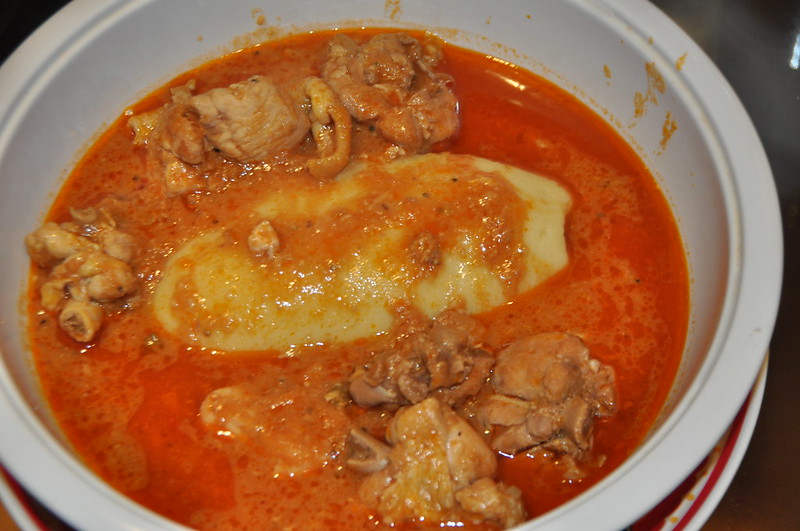
Made from the fruit of the oil palm tree, this soup has a distinctive orange color and rich, slightly sweet flavor that’s unlike anything else in West African cuisine. The palm nuts are boiled and pounded to extract their essence, which is then combined with meat, fish, and vegetables to create a hearty soup. Palm nut soup is traditionally served with fufu, rice, or yam, and the combination creates a meal that’s both filling and deeply satisfying. The unique taste often surprises first-time visitors, but it quickly becomes a favorite.
Kenkey
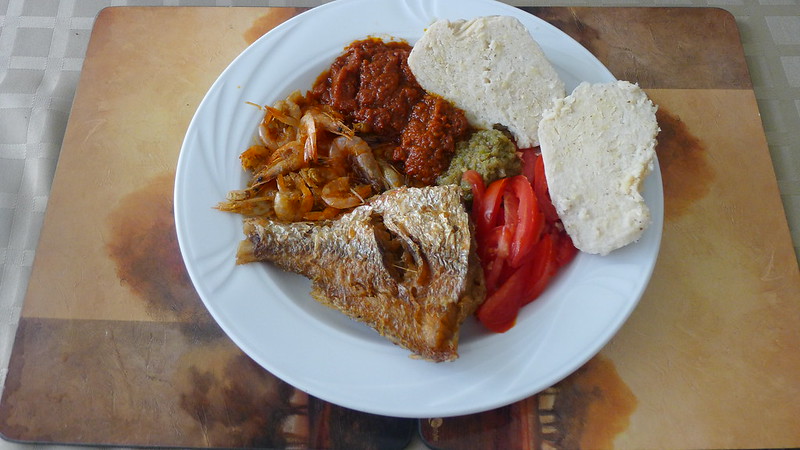
This fermented corn dumpling, wrapped in corn husks or banana leaves, represents one of Ghana’s most traditional foods. The fermentation process gives kenkey a slightly sour taste that pairs wonderfully with spicy pepper sauce, fried fish, or stew. There are two main varieties: Ga kenkey (softer and whiter) and Fante kenkey (firmer and more sour). The preparation process takes several days, involving fermentation, grinding, and careful cooking, which explains why many people prefer to buy it from specialized vendors rather than make it at home.
Okro Soup
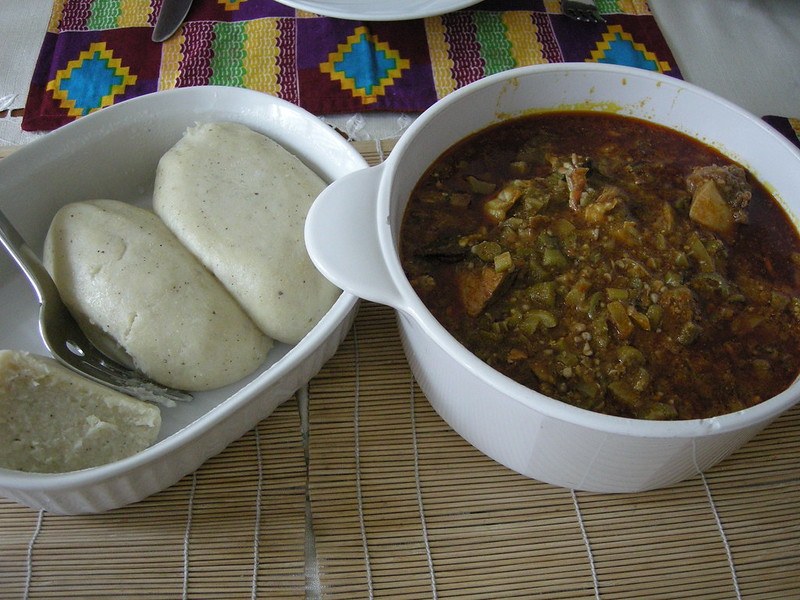
Okra transforms into something magical in this traditional Ghanaian soup, where the vegetable’s natural thickening properties create a satisfying, slightly viscous broth. The soup typically includes meat or fish, tomatoes, onions, and various spices, with the okra providing both flavor and the characteristic texture that makes this dish so distinctive. Some people love the unique consistency, while others need time to appreciate it, but most visitors find themselves won over by the rich, comforting flavors. It’s commonly served with rice, fufu, or banku.
Yam and Kontomire
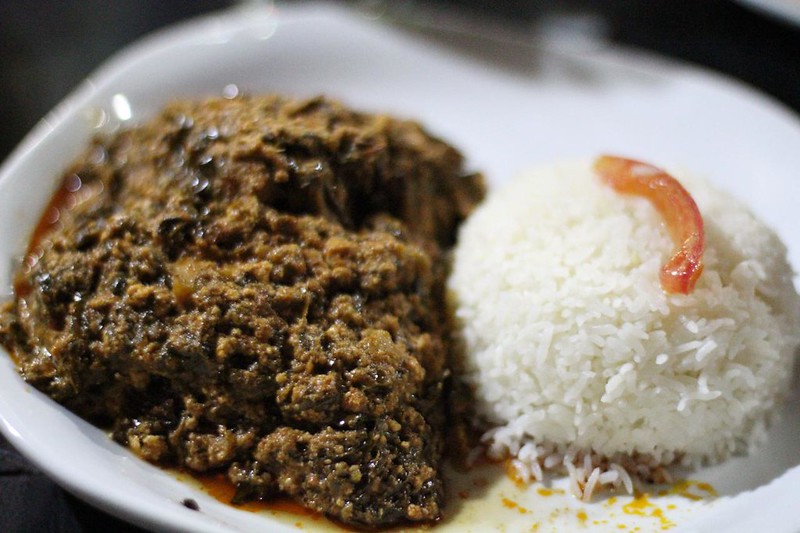
Boiled yam paired with kontomire (a spinach-like green vegetable stew) creates a simple yet satisfying meal that highlights the importance of vegetables in Ghanaian cuisine. The kontomire is usually cooked with palm oil, onions, tomatoes, and sometimes meat or fish, creating a flavorful sauce that complements the mild, starchy yam perfectly. This combination provides excellent nutrition and represents the type of everyday meal that many Ghanaians grew up eating. The dish proves that sometimes the most basic ingredients can create the most memorable flavors.
Bofrot
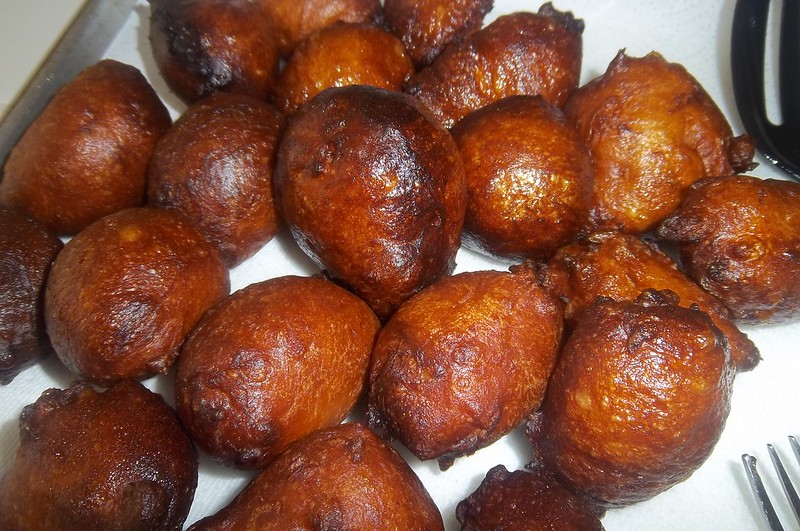
Think of bofrot as Ghana’s answer to donuts—deep-fried dough that’s crispy on the outside and fluffy on the inside. These golden spheres are typically enjoyed as a snack or light breakfast, often paired with porridge or eaten on their own. Street vendors sell fresh bofrot throughout the day, and the aroma of frying dough often draws long lines of eager customers. While they might seem simple, achieving the perfect texture requires skill and experience, which is why many people prefer to buy them from established vendors rather than attempt to make them at home.
From Royal Courts to Street Corners

The journey of these dishes from ancient royal courts to modern street corners tells the story of Ghana itself—a nation that has preserved its culinary heritage while adapting to contemporary life. Many of these recipes have remained largely unchanged for centuries, passed down through families and communities who understood that food is much more than sustenance. Today’s Accra offers visitors the chance to experience this living history, whether they’re dining at a high-end restaurant or grabbing a quick meal from a street vendor. The city’s plates don’t just welcome visitors—they invite them to become part of a continuing story that connects past, present, and future through the universal language of flavor. Each bite offers a glimpse into the soul of Ghana, proving that some traditions are too precious to ever lose.
More from Travel Pug

- 20 Best Beach Towns in the Carolinas
- 13 Destinations Where Tourists Regularly Regret Their Trip
- 20 Things You Actually Get in First Class
- 20 Small Airports With Aviation Museums
- 20 Places in the U.S. That Are Perfect for a Reset Trip
Like Travel Pug’s content? Follow us on MSN.
